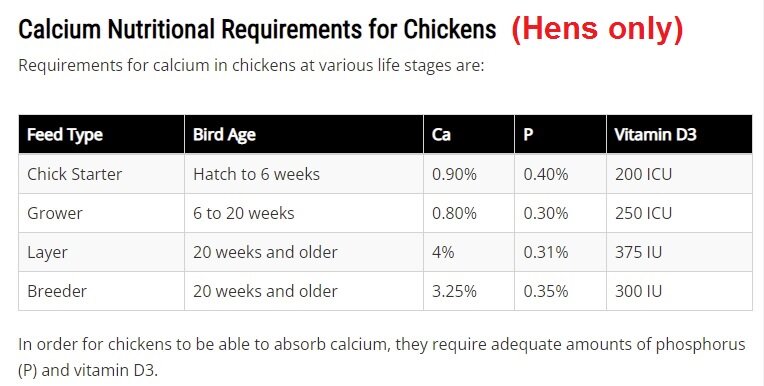EuroChook
Songster
- Jul 18, 2023
- 710
- 2,333
- 226
(Please note: For the female sex of the chicken. The table does not deal with roosters).
Exhibit A, ladies and gentlemen of the jury. A good simple chart to download and keep on the refrigerator door, coop door, wherever it suits best. This gives the correct amounts of CALCIUM, PHOSPHORUS and VITAMIN D for CHICKENS of all life stages (and destinies).
(Please see attached image) Figures given are daily requirement figures.
With special thanks to PoultryDvm.com
(Source: https://poultrydvm.com/condition/low-blood-calcium-level, sourced: August 12, 2023:0312Z).
Exhibit A, ladies and gentlemen of the jury. A good simple chart to download and keep on the refrigerator door, coop door, wherever it suits best. This gives the correct amounts of CALCIUM, PHOSPHORUS and VITAMIN D for CHICKENS of all life stages (and destinies).
(Please see attached image) Figures given are daily requirement figures.
With special thanks to PoultryDvm.com
(Source: https://poultrydvm.com/condition/low-blood-calcium-level, sourced: August 12, 2023:0312Z).
Attachments
Last edited:







